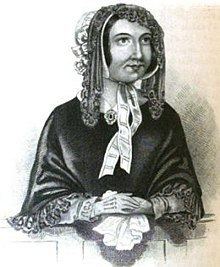Name Marie Manning Role Murderer | Died 1849, Southwark | |
 | ||
Marie manning lie to me secret circus new mexico cover song competition
Marie Manning (1821–13 November 1849) was a Swiss domestic servant who was hanged outside Horsemonger Lane Gaol, London, England, on 13 November 1849, after she and her husband were convicted of the murder of her lover, Patrick O'Connor, in the case that became known as the "Bermondsey Horror." It was the first time a husband and wife had been executed together in England since 1700.
Contents
- Marie manning lie to me secret circus new mexico cover song competition
- Background
- Murder
- Trial and execution
- Reaction
- References
The novelist Charles Dickens attended the public execution, and in a letter written to The Times on the same day wrote, "I believe that a sight so inconceivably awful as the wickedness and levity of the immense crowd collected at that execution this morning could be imagined by no man, and could be presented in no heathen land under the sun." He later based one of his characters—Mademoiselle Hortense, Lady Dedlock's maid in Bleak House—on Manning's life.
Background
Manning was born Marie de Roux in Lausanne, Switzerland, and entered domestic service in England. At first maid to Lady Palk of Haldon House, Devon, she entered the service of Lady Blantyre at Stafford House in 1846. On 27 May 1847 she married publican Frederick George Manning at St James's Church, Piccadilly. Manning's background was chequered; he had worked on the railways, but was discharged on suspicion of being involved in several robberies. After the marriage, Marie continued her friendship with Patrick O'Connor, a gauger in the London Docks. He was also a moneylender who charged extraordinary interest, so he was extremely wealthy, and he was clever enough to invest this money wisely.
Murder
On 9 August 1849, O'Connor dined with the Mannings at their home, 3 Minver Place, Bermondsey. Following a pre-arranged plan, the Mannings murdered their guest and buried his body under the flagstones in the kitchen. On the same day Mrs. Manning visited O'Connor's lodgings, Greenwood Street, Mile End Road, stealing the dead man's railway shares and money. She returned the next day to complete the robbery. However, it is apparent that the couple had planned to double-cross each other; Marie fled with most of the loot, Frederick fled with the smaller portion. Minver Place was named after St Minver, in Cornwall, the home village of James Coleman, the landlord who resided at 1 Minver Place. He later gave evidence at the trial.
Trial and execution
The police discovered O'Connor's remains on 17 August, and soon after apprehended his murderers. Marie was tracked down to Edinburgh, where she was caught when trying to exchange some of O'Connor's property (a listing had been published). Frederick was caught on Jersey. They were tried at the Old Bailey on 25 and 26 October 1849. The trial was not one of the most fascinating in terms of legal problems, except that it was argued that the jury had to include people of French or Swiss ancestry in fairness to Marie.
During the trial, Frederick said that he "never liked him [O'Connor] very much". They were found guilty, Marie yelling imprecations at the British as a perfidious race. They were reconciled shortly before they were executed by William Calcraft at Horsemonger Lane Gaol on 13 November 1849. Mrs. Manning wore a black satin dress on the scaffold, resulting in the myth that the material went out of fashion for many years (though, following the execution, fashion catalogues continued to show black satin garments, suggesting no evidence to support the myth).
Reaction
Charles Dickens wrote a letter to The Times decrying the wickedness and levity of the mob during the execution.
Wilkie Collins in his novel The Woman In White (1860) has one of his heroines comment (referring to the fat villain, Count Fosco) that "Mr. Murderer and Mrs. Murderess Manning were not both unusually stout people?" The novel is set in 1850, a year after the "Bermondsey Horror".
